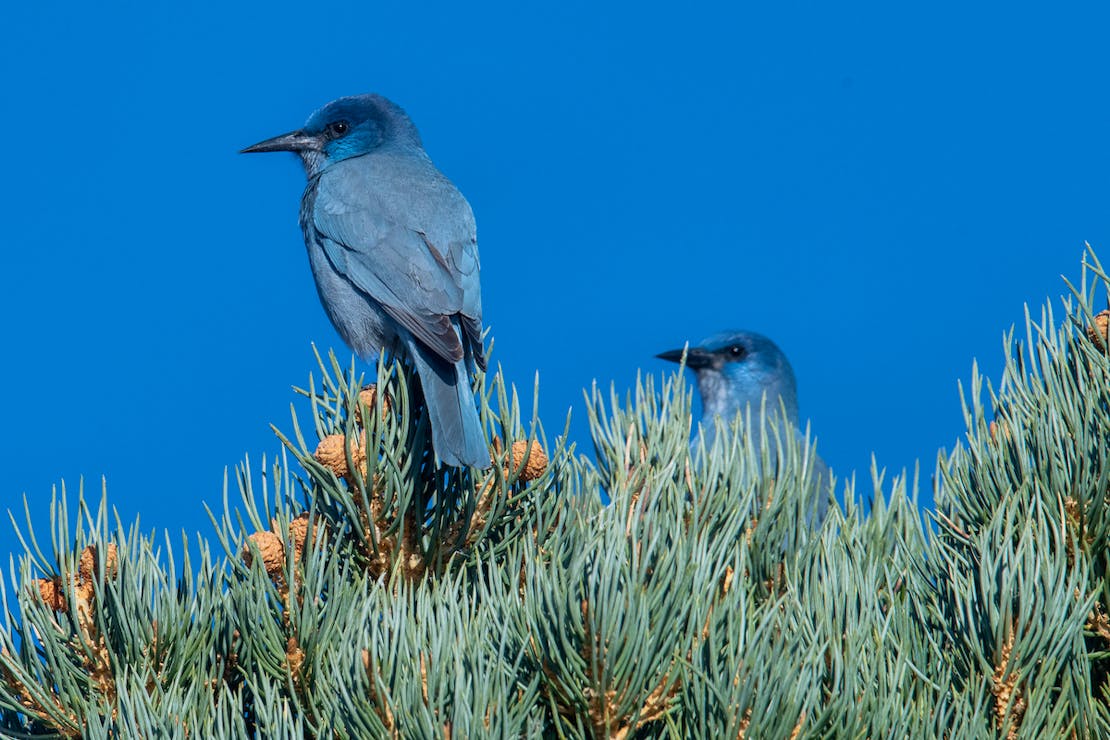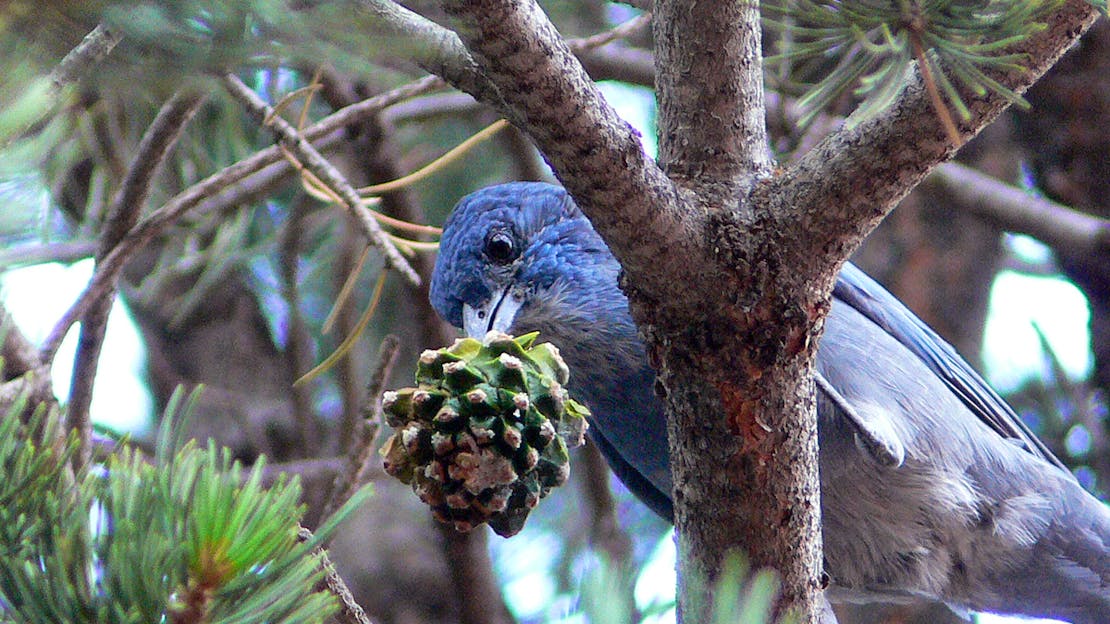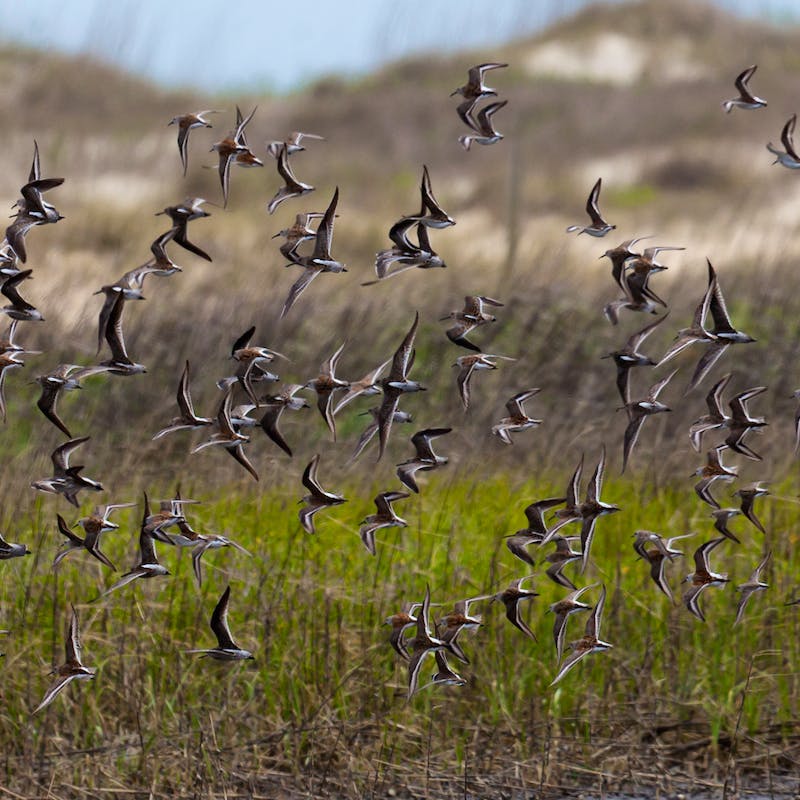Join our mobile Rapid Response Network!
You can be the first to hear about how we’re going to hold the next administration accountable and how you can fight back for wildlife!
The pinyon jay is a gregarious and iconic bird found in western North America. Medium-sized, crestless and pale blue except for a white bib on their throat, chin and upper breast, it thrives in pinyon-juniper woodlands and feeds primarily on pinyon pine seeds.
Why are pinyon jays imperiled?
The pinyon jay and pinyon pine have evolved into a close relationship. The jay’s survival depends on healthy pinyon-juniper woodlands and, in turn, these woodlands depend on the pinyon jay to disperse their seeds across the landscape. However, pinyon jay numbers are plummeting, and they need the protection of the Endangered Species Act to avoid extinction.
Loss of pinyon-juniper woodlands caused by long term drought and climate change, insects and disease directly contribute to the pinyon jays’ decline. Climate change also causes a reduction in pinyon pine seeds, the pinyon jays primary food source. Woodland management practices such as pinyon-juniper removal by thinning and chemical treatments that facilitate grazing, wildfire prevention and game management also contribute. And although protected by the Migratory Bird Treaty Act, there are no legal protections in place to protect the pinyon jay and its pinyon-juniper woodland habitat.

Defenders' Impact
To address threats and secure adequate regulatory protections for the pinyon jay, Defenders is urging the U.S. Fish and Wildlife Service to list the pinyon jay as endangered or threatened under the Endangered Species Act. In April 2022, we formally petitioned the U.S. Secretary of the Interior to list and designate critical habitat for the species.
We also use science, education, litigation and research to bolster conservation and provide pinyon jay habitat management and conservation guidance to federal, state, and private land managers.
What You Can Do
Urge your federal, state and local agencies responsible for forest management to avoid thinning pinyon-juniper woodlands whenever possible. If thinning must happen to protect human infrastructure, encourage minimizing impacts to pinyon jay, and other pinyon-juniper birds, by following New Mexico Avian Conservation Partners guidelines.
If you live in pinyon jay country, protect pines for jays! You can also help collect pinyon jay data as part of a community science project, such as the Pinyon Jay Monitoring Project, created by the Great Basin Bird Observatory and Audubon Southwest with financial support from partners such as Defenders of Wildlife.

About
Incredibly social birds, pinyon jays fly, forage and nest together from central Oregon across to western South Dakota and central Montana down to southern New Mexico.
The global pinyon jay population is 770,000 individuals, but over the past 50 years it has declined immensely, with some estimates showing an 84% loss. Without protections afforded by the ESA, the population will likely continue to decline rapidly, with disastrous results for pinyon jays, pinyon-juniper woodlands and every plant and animal that calls these woodlands home.
Pinyon Jays are sociable at all seasons, traveling in flocks, nesting in colonies. When on the move they fly close together, making harsh, nasal calls.
Breeds in late winter. Lays 4-5 eggs, very pale, blue green to grayish color with brown dots. The female incubates the eggs for 17 days and is fed by the male during the incubation period.
Pinyon jays are omnivores and feed heavily on pinyon pine nuts. In summer, pinyon jays also eat insects, including beetles, caterpillars, and grasshoppers.
News

Defenders Lawsuit Challenges Failure to Protect Pinyon Jay
Pinyon Jay Blog Posts










